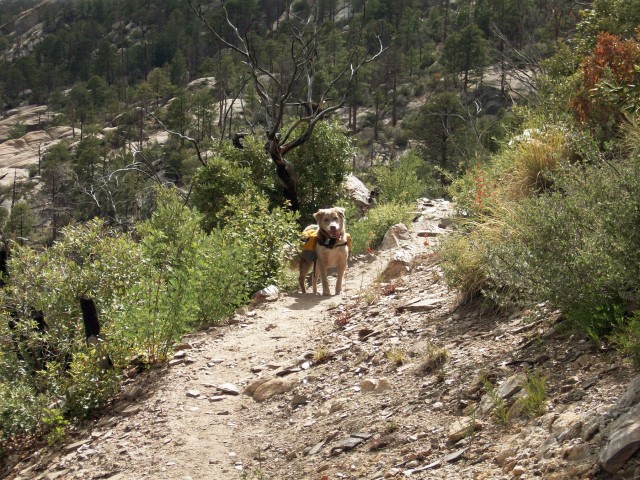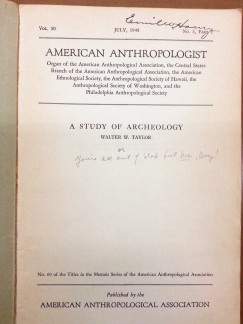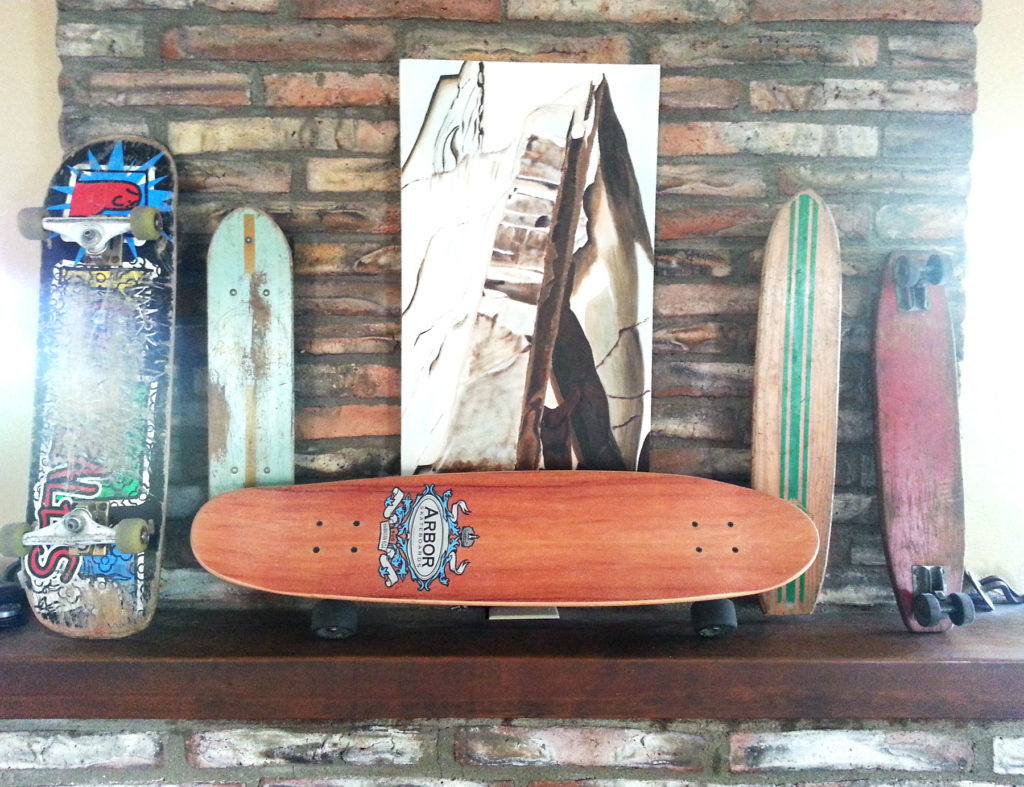- Home
- >
- Preservation Archaeology Blog
- >
- Bridges
As International Archaeology Day (October 15, 2016) approaches, we’re celebrating by sharing posts about what we’re working on now—the daily work of archaeology.
(October 13, 2016)—Hey, all. I wanted to chat a bit about what I’m doing outside of my work life. I know: you’re not here to hear about my time outside of my career. It might seem as though I’m not doing what the above slug-line says I am, but I think it relates. (Did I just break the fourth wall of blogging? Is that a thing?)
I believe that understanding us as more than archaeologists is important for several reasons. For this post, I’ll just stick to one, though. If you really want to see what a normal day looks like for me, check out this older, short post. Today, let’s talk about why I do what I do on a daily basis.
In a recent Tea and Archaeology talk, I broke ranks with the typical “this is what I am going to talk about” intro and started with “this is how I got interested in the topics I am going to talk about.” I did this because I think how archaeologists and researchers first think of things is important—fundamentally important.
There are examples all over our field of people starting to research children in the archaeological record after they’ve had their own kids. Or, researchers become incredibly engaged with using the archaeological record to examine gender fluidity and queer histories. Frequently, although not necessarily, it is because their lives have been marked in some way by these topics. The main point: an archaeologist’s personal life intruding into their work is not bad.
Though some might consider this bias (and there are ways to minimize bias, including the rigorous peer review we always go through), these types of crosscutting interests actually make our work relevant in the present. They are also one of the things that keep us interested in our job. Most archaeologists love things, but as David Hurst Thomas famously said (now tattooed on my arm), “It’s not what you find, it’s what you find out.” Our interests help us move past the former and into the latter.
And so, in many ways, we drag the present into the past, just as often as we drag the past into the present. In its worst incarnation, the former can introduce bias into our research; in its best form, it helps create a research method (either scientific, historic, or humanistic) that is creative, exciting, and topical. Our concerns in the contemporary world are tested in some ways against the past, just as we use the past to critically examine the present. This is the regular dialogue of research that archaeologists have with themselves. Yet, other archaeologists, researchers, and the public only see half of it. The part that is published, the part that is scientifically or historically tested and examined. What is published is in some ways analogous to Plato’s cave. Our research can seem irrelevant to many people because it kind of seems as though we’re analyzing shadows on a wall.
But when we open up ourselves as archaeological artifacts to be analyzed, we see that we are bridges—what archaeologists would call liminal objects—between worlds. We are analyzing shadows on the wall, but in the process we are understanding, or attempting to understand, the actions of the people casting the shadows. We are in the middle of that process, along with, in the U.S. Southwest at least, Native elders and holders of oral histories, ethnohistorians, historians, and other historical social researchers.
![Plato’s allegory of the cave. By Veldkamp, Gabriele and Maurer, Markus [CC BY-SA 3.0 (http://creativecommons.org/licenses/by-sa/3.0)], via Wikimedia Commons(http://creativecommons.org/licenses/by-sa/3.0)], via Wikimedia Commons](https://www.archaeologysouthwest.org/wp-content/uploads/2016/10/Plato_-_Allegory_of_the_Cave-455x640.png)

My wife Melissa has also fed my intellectual curiosity. She’s maintained a lifelong interest in animal welfare, held a career in that field, and spent many years engaged in animal behavioral analysis and positive reinforcement training. She spent time working for Dr. Patricia McConnell’s former company Dog’s Best Friend. She even beat me to the primary author research publication punch (see article here). She has since moved into a new focus on facilitating the reuse of material culture. This in many ways grew out of our mutual interest in the problems of consumption in contemporary life—upon which archaeology has heavily influenced my views.
We have two daughters who are incredibly inquisitive and raucous and rowdy and just smart. Watching them tackle the world around them and derive incredibly logical but factually ridiculous conclusions from their observations has instilled in me a fundamental interest in how we construct knowledge. I’m applying this in my other job with Leiden University. There I’m beginning a project that will deeply query how archaeological knowledge is constructed and what that means for our data—and by extension, for our understandings of how people purposely and accidentally express group membership, or cultural belonging.

As noted, I’ve talked before about how I gained some of my research interests. This history led to a scenic desert trip with a number of dead ends and an eventual arrival at a dissertation titled, Lost Voices Found: An Archaeology of Contentious Politics in the Greater Southwest, A.D. 1100–1450. The linked talk is mostly about that, but at an hour long, I understand if you aren’t able to watch it.
My elevator-speech version is that there are many hinge points, or transitional periods, in the historical and archaeological record. In archaeology, we’ve often talked about them as either products of environmental change, or inevitable products of social scaling (i.e., increases in population), and sometimes as social reactions to what has been termed “breakdowns of society.” I reanalyzed two case studies in the Greater Southwest, asking not how this happened or why this happened, but why the end result looked the way it did when so many other options were available. That, I think, is an important question that has been missed. And it led me to argue that the history of the Greater Southwest is filled with constant slides into hierarchy as social mechanisms restricting increases in inequality broke down, followed by sudden reactions as groups tore apart those hierarchical institutions and built new limiting mechanisms.

A lot of these interests also came out of an early passion for skateboarding on the street. Although you might see this as an innocent or—depending on your view of the ownership of the commons—a criminal pastime, one of the underlying acts of skateboarding is a constant and physical performance aimed at reclaiming public space for the public. In fact, since its inception back in the early 1950s, skateboarding has been a political act. Fun, yes. Amazing to watch, yes. But political all the same. And it is an intensely, material political act. It uses human material culture to impact an environment built by humans to contest restrictive control of space.
So, the theme of subversive actions aimed at questioning who is allowed privileges and rights in society has been with me for a very long time. Looking back, it seems pretty natural that I’d be addressing many of those issues by examining what many people have called transitional periods in the precolonial U.S Southwest from a perspective of understanding who controls space and understanding how that control of space (in this case religious architecture) was contested.
And now I need to get back to teaching my daughters how to skateboard.
Explore the News
-
Join Today
Keep up with the latest discoveries in southwestern archaeology. Join today, and receive Archaeology Southwest Magazine, among other member benefits.
